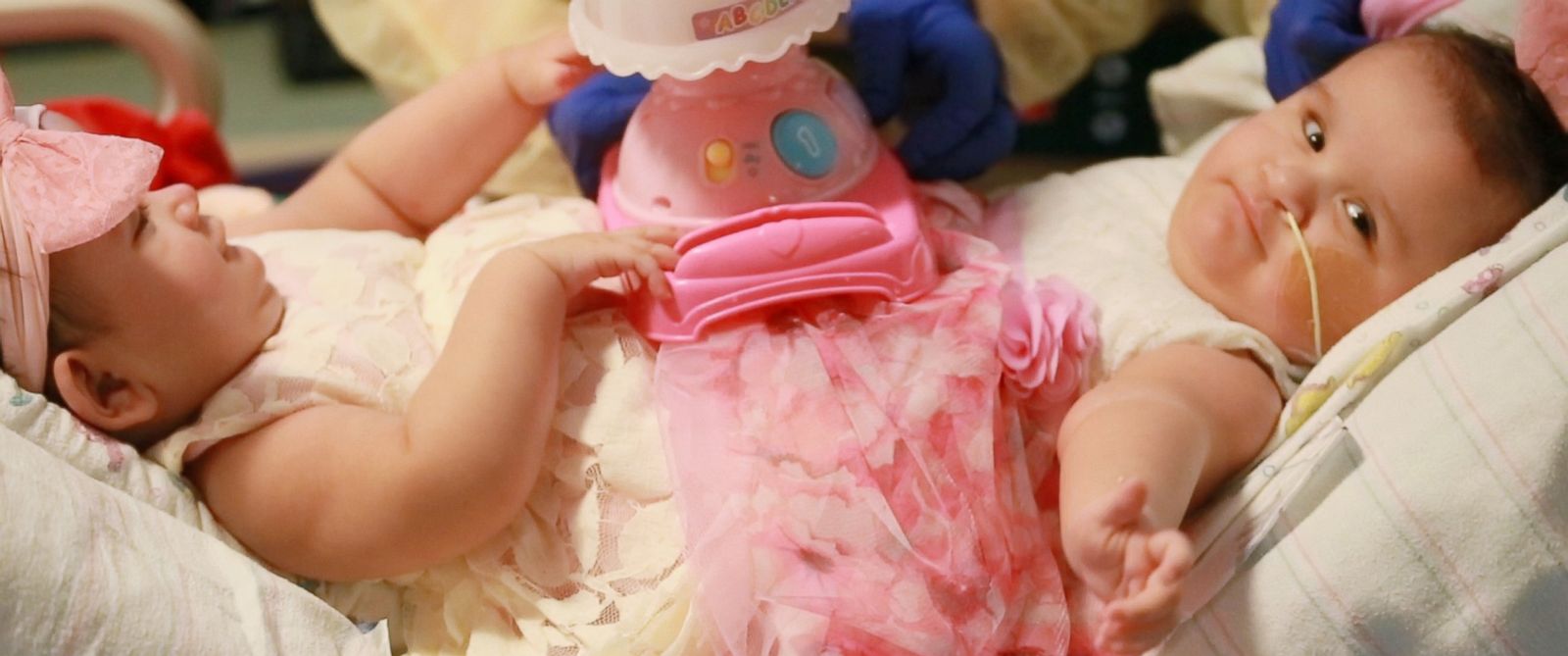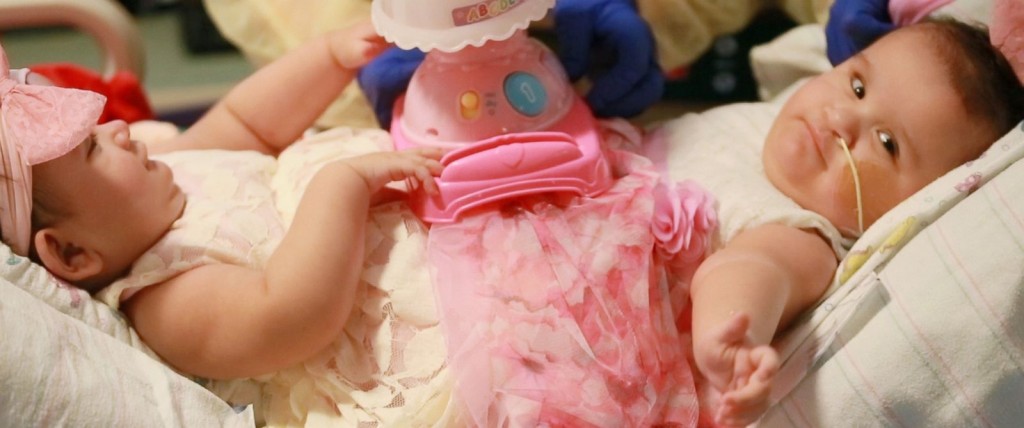Doctors Use 3-D Models, Special Balloons to Separate Conjoined Sisters

Doctors at a Texas hospital explained today how they used 3-D modeling, injectable dye and special "balloons" to safely separate two conjoined sisters earlier this week.
Sisters Ximena and Scarlett Hernandez-Torres were born connected at the waist, sharing a colon and bladder — a 1 in 50 million chance — according to the Driscoll Children's Hospital. After 11 months spent joined at the pelvis, the girls were separated in a marathon 12 hour surgery on Tuesday.
The sisters' doctors talked today about the new technology that helped them with the complex procedure.
“If I had to use a cliché, it was like an orchestra," said Dr. Haroon Patel, a urologist at Driscoll Children's Hospital who treated the girls. "Everything just came together seamlessly."
The doctors said they spent months studying the conjoined anatomy to understand how to best separate the infants. The girls were joined at the pelvis and had shared urinary and gastrointestinal systems. Their two pelvis structures were splayed open so that the girls were doing the "splits," according the surgical team. The conjoined infants were two of triplet sisters.
Dr. Kevin Hopkins explained that to separate the girls, they used a profusion scanner, which allowed them to see how injectable dye traveled through the girls' bloodstream and understand exactly how their system could be separated.
“I don’t want to make it seem like it was easy, but it certainly made our life easier," Hopkins said today.
Scans with 3-D models of the girls' internal organs were also used so that doctors could map out how to safely separate the girls' shared urinary and gastrointestinal systems.
Additionally, balloon expanders were placed under the girls' stomachs and slowly filled with water so that once they were separated, doctors would be able to use the expanded tissue to cover their wounds.
The girls were in surgery for a total of about 12 hours, but were separated after just three hours. While the sisters remain in intensive care today, they are in stable condition, Patel said. He explained the girls will likely need more follow-up procedures to help correct any problems or complications that may arise.
“They’re not out of the woods yet because there is a lot that still needs to be done," Patel said.
Политика конфиденциальности | Правила пользования сайтом








